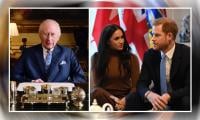Women, words and the constitution
One of the landmark moments during the golden jubilee celebrations of the constitution of Pakistan was the realization that the time had come to foster inclusivity in its language.
This idea took shape on the floor of the National Assembly, where I had the privilege of highlighting the presence of gender non-inclusive language in a draft legislation. The honourable speaker of the National Assembly, invoking Article 263 of the constitution, ruled that “words implying the masculine gender in the constitution shall be interpreted to encompass females as well.”
Cowering behind the argument that traditional language has long been employed in constitutional and legal texts may seem convenient, but it is hardly compatible with evolving gender roles and the fundamental concept of gender equality. Across numerous countries, a growing consciousness is emerging, advocating for the use of either gender-neutral or gender-inclusive language. This heightened awareness stems from the increased representation of women in democratic institutions and their presence at crucial decision-making tables within the realm of governance.
Owing to the contributions of feminist movements worldwide, tangible progress has been achieved in certain jurisdictions such as Sweden, Canada, Finland, and New Zealand, where legal texts are being authored in a different manner. In the United Kingdom and the European Parliament, the adoption of gender-inclusive language in laws, debates, and discussions has been duly recognized. Debates and discussions on this issue are expanding in many countries, reflecting a global shift towards greater inclusivity.
In Pakistan, in the third decade of the 21st century, we embarked on a historic initiative to reinterpret the constitution through women’s perspective. The Federal Ministry of Law and Justice joined forces with the Women Parliamentary Caucus, and two days of vigorous deliberations took place at the Pakistan Institute for Parliamentary Services. Meticulous background research conducted for this initiative revealed that, while the constitution of Pakistan acknowledges “We the people” in its preamble, its extensive text, spanning over 280 articles, schedules, and oaths, recognizes individuals and groups in various ways.
Chairing the session on ‘Language of the Constitution’, I spoke with esteemed experts including veteran politicians and expert drafters on how masculinity in legal drafting of the constitution has curbed women’s empowerment and the importance of gender neutrality whilst promulgating law.
Mr Farhatullah Babar elaborated on the importance of a ‘word’ itself – as it forms the basis of love, hate, war and peace. Therefore, discounting the significance of a word in defining circumstances, especially in terms of constitutional provisions, is not ideal for gender equality. It was described how the use of masculine language in a society where patriarchy is deeply entrenched has inevitable and detrimental effects on the legal and social status of a Pakistani woman. As he aptly noted, removing masculine language has been a strenuous task and the exception provided in the General Clauses Act seems to be outdated in a time where the use of language is of utmost significance towards gender-based sensitivities.
The purpose of positive discrimination and affirmative action which is encompassed in Article 25 of the constitution as well, highlights the need for special efforts made by the state to equate women with men, as women have been at the receiving end of discrimination and have been back benched since the inception of gender itself.
As chair of the session, I emphasized the importance of women’s representation in the Bar – as the nurseries of the legal fraternity – and imposing the policies of positive discrimination in an efficacious manner to achieve the desired result of gender equality. The session was successfully concluded upon resolution by Mr Jam Aslam, senior drafter, who urged the parliamentarians in attendance to propose before the House for the use of only gender-neutral language. He further added that he too will only use gender-neutral terms in future drafting of legislation and the constitution.
At present, the constitution employs the term ‘people’ 30 times and ‘peoples’ once, ‘citizen’ 27 times, ‘citizens’ 15 times, ‘person’ 236 times, ‘human’ three times, ‘humane’ once, ‘family’ 9 times, and ‘individual’ 10 times. It uses ‘man’ 14 times, ‘men’ zero times, ‘woman’ three times, ‘women’ 21 times, ‘female’ once, ‘male’ zero times, ‘mother’ 35 times, ‘daughter’ and ‘son’ two times each, ‘widow’ six times, ‘spouse’ three times, ‘child’ seven times, and ‘children’ five times. It employs ‘he’ 40+ times, ‘his’ 157 times, ‘him’ 44 times, and ‘himself’ seven times. ‘She’ and ‘her’ appear twice each, and ‘herself’ does not appear at all. ‘Ombudsman’ is mentioned once in the Federal Legislative List-1, ‘chairman’ 66 times, ‘deputy chairman’ 14 times, ‘Qaumi Razakar’ and ‘lumberdar’ once each.
What can be done to address this? Global best practices guide us to either repeatedly mention the noun or, where unavoidable, use plural pronouns. If we choose to make this change in pursuit of gender parity and inclusivity, it will be necessary to amend the constitution. Until that historic moment arrives, the parliament may consider adopting a resolution to encourage the use of gender-inclusive language in future legal texts. In this regard, the General Clauses Act-1897 should be amended to incorporate gender-inclusive terminology.
The significance of adopting gender-inclusive language in the constitution and legal texts cannot be overstated, as language profoundly shapes our interpretations, aids in negotiating the meanings of governance, and helps us make sense of institutional frameworks. The terms we choose to use have a direct impact on how we think, perceive, and behave. Our communication and writing reflect our underlying assumptions about the world, including gender roles and relationships. Even the order in which words are placed in legal texts conveys our priorities.
The evolution of gender roles, hidden beneath the usage of exclusively masculine terms, is a testament to the fact that gender equality, inclusion, and representation were not granted automatically. Instead, women had to wage separate struggles to secure the ‘right to vote’ and the ‘right to stand for elections’ during the first and second decades of the twentieth century, and this journey continues in some countries even today.
While our constitutional framework ostensibly places no barriers on women occupying top positions in the country, the articles pertaining to these offices predominantly employ masculine pronouns. This needs to change in order to break down barriers of imagination. Although Pakistan has witnessed a woman prime minister, women speakers in the National Assembly and the Sindh and Balochistan assemblies, as well as numerous deputy speakers at the federal and provincial levels, it is worth noting that since 1973, only one woman has been appointed as governor in Sindh. We have yet to witness the appointment of any woman as the attorney general or even the auditor general.
The time has come to embrace gender-inclusive language in the constitution and legal texts, ensuring that women become visible both in the explicit provisions and the hidden implications. This endeavour aligns with Article 34 of the Principles of Policy enshrined in the constitution, which mandates: “Steps shall be taken to ensure the full participation of women in all spheres of national life.” Let us forge ahead to make Pakistani women visible in all spheres of national life.
The writer is a member of the
National Assembly of Pakistan, and chairperson SDGs Child Rights Special Committee.
She tweets @MehnazAkberAziz
-
 Sarah Ferguson Resorts To A Cynical Attempt At Survival And Runa Out Of Lives
Sarah Ferguson Resorts To A Cynical Attempt At Survival And Runa Out Of Lives -
 Nicole Kidman 'calm' And Focused After Keith Urban Split
Nicole Kidman 'calm' And Focused After Keith Urban Split -
 Prince Harry Deserves UK Security: ‘Didn’t Choose His Fate’
Prince Harry Deserves UK Security: ‘Didn’t Choose His Fate’ -
 Brooklyn Beckham Goes Public With His Side Of The Story Amid Feud With Family
Brooklyn Beckham Goes Public With His Side Of The Story Amid Feud With Family -
 Sarah Ferguson & Andrew Turn Volatile And Makes Buckingham Palace’s Biggest Fear Come True
Sarah Ferguson & Andrew Turn Volatile And Makes Buckingham Palace’s Biggest Fear Come True -
 Brooklyn Beckham Finds It 'hard' To Keep Contact With Sister Harper
Brooklyn Beckham Finds It 'hard' To Keep Contact With Sister Harper -
 Meghan Markle’s Laundry List Of Demands Finally Gets Answer By King Charles?
Meghan Markle’s Laundry List Of Demands Finally Gets Answer By King Charles? -
 New Mystery About 'Ring Nebula' Shock Astronomers: Here's Why
New Mystery About 'Ring Nebula' Shock Astronomers: Here's Why -
 Prince Harry Picks PR Photos In Fear Of ‘bald Spots’
Prince Harry Picks PR Photos In Fear Of ‘bald Spots’ -
 Saying Prince Harry Will ‘probably Be Fine Isn’t Good Enough’, Expert Speaks Out
Saying Prince Harry Will ‘probably Be Fine Isn’t Good Enough’, Expert Speaks Out -
 Inside Meghan Markle’s Plans ‘With Love, Meghan’: Season 3 And Valentines Day Specials
Inside Meghan Markle’s Plans ‘With Love, Meghan’: Season 3 And Valentines Day Specials -
 King Charles Gets Caught Between A Rock And A Hard Place For The Second Time With Harry
King Charles Gets Caught Between A Rock And A Hard Place For The Second Time With Harry -
 Dolly Parton Hints At More Music As She Marks 80
Dolly Parton Hints At More Music As She Marks 80 -
 Simu Liu Reveals How His Family Treated Him After He Started Acting
Simu Liu Reveals How His Family Treated Him After He Started Acting -
 Gwyneth Paltrow Mourns Valentino As She Calls His Death 'end Of An Era'
Gwyneth Paltrow Mourns Valentino As She Calls His Death 'end Of An Era' -
 Prince Harry Questioned Over Desires Of Becoming ‘next King’
Prince Harry Questioned Over Desires Of Becoming ‘next King’



